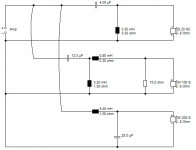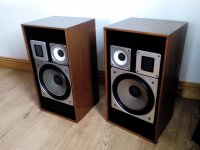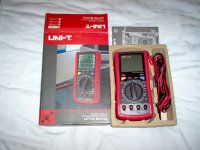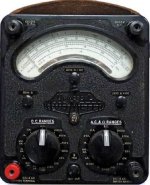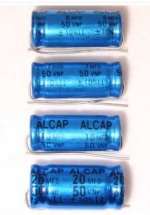Unscrew the speaker terminal and all the units, mark where
the wires were and pull out any stuffing or objects that might
be in the way of getting the XO board out of the cabinet.
the wires were and pull out any stuffing or objects that might
be in the way of getting the XO board out of the cabinet.
Hello! Would you be so kind to give me some suggestions on the values of the capacitors for the 3XP's? I would like to recap them
Thank you!
Thank you!
Hello! Would you be so kind to give me some suggestions on the values of the capacitors for the 3XP's? I would like to recap them
Thank you!
pull them out.
read the values.
Hi everyone New to the site! Got some great info since signing up.
I have a similar a set of wharfedales to the Glendale 3 xp models but mine have the ribbon tweeters and are made with a better stereo image ( tweeters and mids are reverse to each other) and are factory made which is unusual. I seem to have the Glendale/linton 3xp crossover and would like to recap. The values are 4uf/12uf/25uf the only one I can not seem to find in the 50v is the 4uf. Can I replace with a 4uf 100v . I see in a previous post that 250v would be fine but can't find 4uf 250v?
Also can anyone help with the modern equivalent of the 15 ohm slim resistor ( I think?)
I have had these since 1991 and thought its time to change the caps as there a unusual set
I have a similar a set of wharfedales to the Glendale 3 xp models but mine have the ribbon tweeters and are made with a better stereo image ( tweeters and mids are reverse to each other) and are factory made which is unusual. I seem to have the Glendale/linton 3xp crossover and would like to recap. The values are 4uf/12uf/25uf the only one I can not seem to find in the 50v is the 4uf. Can I replace with a 4uf 100v . I see in a previous post that 250v would be fine but can't find 4uf 250v?
Also can anyone help with the modern equivalent of the 15 ohm slim resistor ( I think?)
I have had these since 1991 and thought its time to change the caps as there a unusual set
Using a higher voltage than the original is not an issue. Good luck, I hope you enjoy them after the recap. I have never done this with speakers, but with amplifiers it has made a magnificent improvement.Hi everyone New to the site! Got some great info since signing up.
I have a similar a set of wharfedales to the Glendale 3 xp models but mine have the ribbon tweeters and are made with a better stereo image ( tweeters and mids are reverse to each other) and are factory made which is unusual. I seem to have the Glendale/linton 3xp crossover and would like to recap. The values are 4uf/12uf/25uf the only one I can not seem to find in the 50v is the 4uf. Can I replace with a 4uf 100v . I see in a previous post that 250v would be fine but can't find 4uf 250v?
Also can anyone help with the modern equivalent of the 15 ohm slim resistor ( I think?)
I have had these since 1991 and thought its time to change the caps as there a unusual set
Very interesting, my friend! A variant on the Linton 3XP...
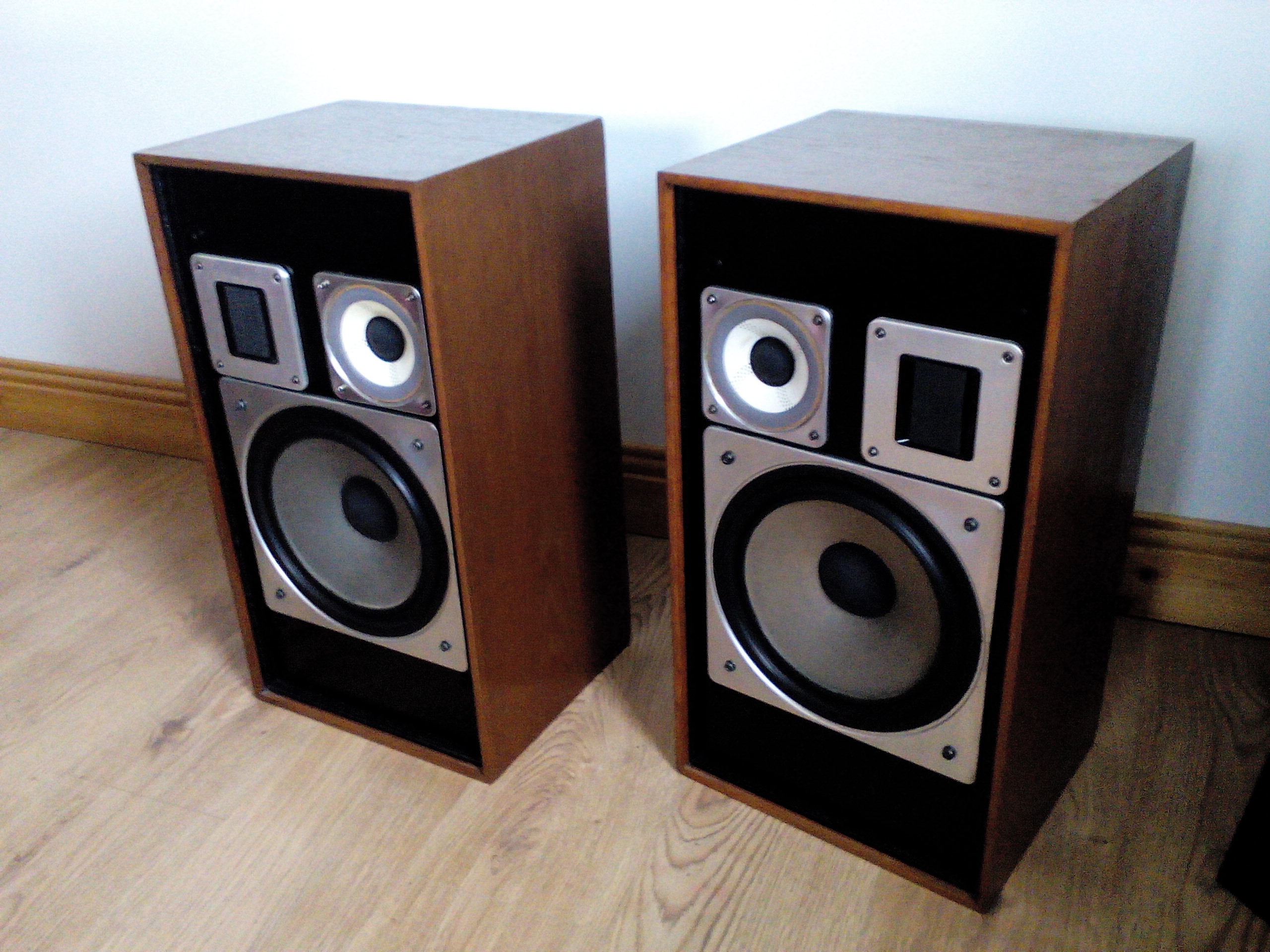
Frankly I amaze myself with my intuitive guesses based on incomplete information:
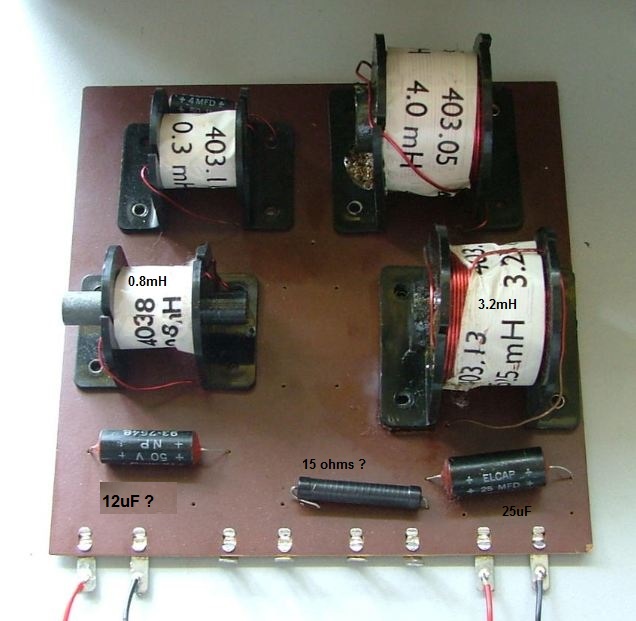
If anybody is ever offered an old pair of Wharfedales, snap them up in a hurry. These are my old Shelton XP2:
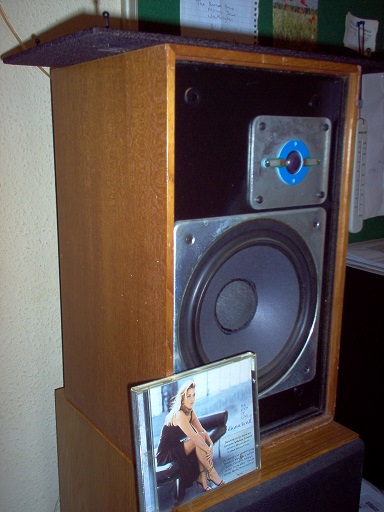
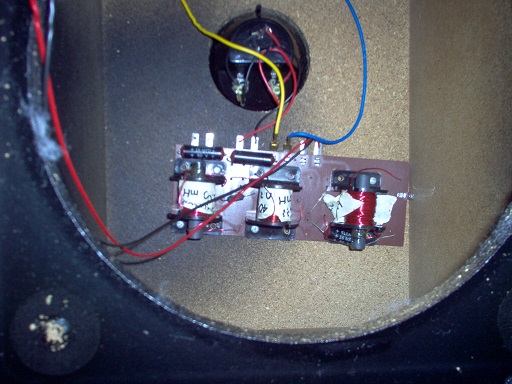
Great cabinets, usually closed box. All sorts of crossovers, but often BW3. I think Whafedale made great 8" bass units. I suppose we have reason to think those old NP electrolytics dry out with age. So recapping is an idea. But really, do you thing a preferred value of 3.9uF @ 50V will sound much different fronm a 4uF @ 50V? I don't. 100V types sound better on paper, but might have different ESR, or resistance, so you are on your own there. Resistors might as well be 10 watt ceramics for 15R. You know, those white things. 🙂
Frankly I amaze myself with my intuitive guesses based on incomplete information:
If anybody is ever offered an old pair of Wharfedales, snap them up in a hurry. These are my old Shelton XP2:
Great cabinets, usually closed box. All sorts of crossovers, but often BW3. I think Whafedale made great 8" bass units. I suppose we have reason to think those old NP electrolytics dry out with age. So recapping is an idea. But really, do you thing a preferred value of 3.9uF @ 50V will sound much different fronm a 4uF @ 50V? I don't. 100V types sound better on paper, but might have different ESR, or resistance, so you are on your own there. Resistors might as well be 10 watt ceramics for 15R. You know, those white things. 🙂
Thanks for the help! Can't wait to recap them as there in fantastic condition. Changed a few HF caps and a few potentiometers but never fully recapped speakers before.
Hi Steve. In the picture of the crossover there's a slim resistor marked 15ohm. On mine there is no markings but I'm guessing there the same. I'm not sure exactly what to order as a replacement?
Hi Steve. In the picture of the crossover there's a slim resistor marked 15ohm. On mine there is no markings but I'm guessing there the same. I'm not sure exactly what to order as a replacement?
Last edited:
Thanks Steve this is the info I'm not sure about? If its safer I will go with 3.9uf 50v just not sure if it would damage them over time!
The 15 ohm is the other one I'm not sure what replace with ? Do falcon do a modern equivalent?
The 15 ohm is the other one I'm not sure what replace with ? Do falcon do a modern equivalent?
You don't know what that resistor is till you measure it, preferably out of circuit to avoid the unexpected:

I have a modern digital multimeter that can do most things. TBH, it behaves strangely sometimes but I have some known components that I use to calibrate it sometimes. Back in the day we used AVO meters. No use for inductance or capacitance without using Bridge techniques. But rock solid.
TBH, I wouldn't replace the resistor. What can go wrong with a piece of low inductance copper wound round a narrow former? Much as we love the whole recap subject, those old non-polar electrolytics just seem to go on and on.
Unless a speaker has been severely overdriven at parties, or subject to feedback howl with PA and microphone use which is the great destroyer of tweeter sections, you might be disappointed. Falcon Acoustics and Wilmslow Audio can doubtless supply modern replacements for NPE capacitor types and resistors.
I have a modern digital multimeter that can do most things. TBH, it behaves strangely sometimes but I have some known components that I use to calibrate it sometimes. Back in the day we used AVO meters. No use for inductance or capacitance without using Bridge techniques. But rock solid.
TBH, I wouldn't replace the resistor. What can go wrong with a piece of low inductance copper wound round a narrow former? Much as we love the whole recap subject, those old non-polar electrolytics just seem to go on and on.
Unless a speaker has been severely overdriven at parties, or subject to feedback howl with PA and microphone use which is the great destroyer of tweeter sections, you might be disappointed. Falcon Acoustics and Wilmslow Audio can doubtless supply modern replacements for NPE capacitor types and resistors.
Attachments
Hi everyone New to the site! Got some great info since signing up.
I have a similar a set of wharfedales to the Glendale 3 xp models but mine have the ribbon tweeters and are made with a better stereo image ( tweeters and mids are reverse to each other) and are factory made which is unusual. I seem to have the Glendale/linton 3xp crossover and would like to recap. The values are 4uf/12uf/25uf the only one I can not seem to find in the 50v is the 4uf. Can I replace with a 4uf 100v . I see in a previous post that 250v would be fine but can't find 4uf 250v?
Also can anyone help with the modern equivalent of the 15 ohm slim resistor ( I think?)
I have had these since 1991 and thought its time to change the caps as there a unusual set
Very interesting, my friend! A variant on the Linton 3XP...

Frankly I amaze myself with my intuitive guesses based on incomplete information:

If anybody is ever offered an old pair of Wharfedales, snap them up in a hurry. These are my old Shelton XP2:


Great cabinets, usually closed box. All sorts of crossovers, but often BW3. I think Whafedale made great 8" bass units. I suppose we have reason to think those old NP electrolytics dry out with age. So recapping is an idea. But really, do you thing a preferred value of 3.9uF @ 50V will sound much different fronm a 4uF @ 50V? I don't. 100V types sound better on paper, but might have different ESR, or resistance, so you are on your own there. Resistors might as well be 10 watt ceramics for 15R. You know, those white things. 🙂
Those Shelton's would look great alongside my 3 xp. Mine are the 10" driver but they never had the rank organization badge with model type? They did come from ramport studios battersea when a friends father refiited the studio with new equipment he took these away and gave them to me years later. There was a rest room there for inbeetween recording and they where set back into the walls.
Going to go with the 3.9 uf 50v .was not sure if it was OK to change to 100v so that's why I signed up here! Great site !
You don't know what that resistor is till you measure it, preferably out of circuit to avoid the unexpected:

I have a modern digital multimeter that can do most things. TBH, it behaves strangely sometimes but I have some known components that I use to calibrate it sometimes. Back in the day we used AVO meters. No use for inductance or capacitance without using Bridge techniques. But rock solid.
TBH, I wouldn't replace the resistor. What can go wrong with a piece of low inductance copper wound round a narrow former? Much as we love the whole recap subject, those old non-polar electrolytics just seem to go on and on.
Unless a speaker has been severely overdriven at parties, or subject to feedback howl with PA and microphone use which is the great destroyer of tweeter sections, you might be disappointed. Falcon Acoustics and Wilmslow Audio can doubtless supply modern replacements for NPE capacitor types and resistors.
Again this is the info I needed! Yes the whole recapping thing is new to me ! Prefer to leave them as is so I will leave the 15 ohm resistor
Just looked on wilmslow and falcon and neither have 3.9uf 50v do you know of anywhere else that might stock the 3.9uf 50v
I wouldn't sweat it too much. It is a simple law of physics that two 8uF capacitors in parallel amount to a 4uF capacitor:
Alcap 8.00uF 50V DC Electrolytic Capacitor non-polarised Standard series from Falcon Acoustics, The Leading Supplier of DIY Hifi Components.
Though, TBH, I don't know why 3.9uF capacitors have suddenly gone out of style... 😀
Alcap 8.00uF 50V DC Electrolytic Capacitor non-polarised Standard series from Falcon Acoustics, The Leading Supplier of DIY Hifi Components.
Though, TBH, I don't know why 3.9uF capacitors have suddenly gone out of style... 😀
I wished they still made them aswell lol.
So two 8uf connected / soldered side by side makes 4uf
I would have thought two 8uf would make 16uf. But obviously I'm out of my depth lol
I might stick to stonemasonry which I'm good at !!
So two 8uf connected / soldered side by side makes 4uf
I would have thought two 8uf would make 16uf. But obviously I'm out of my depth lol
I might stick to stonemasonry which I'm good at !!
Last edited:
How it works is two 2uF capacitors wired in series amount to 4uF. Two 8uF capacitors wired in parallel amount to 4uF. It's not exactly the same thing with drivers, but that is subtle stuff and depends on separate or common enclosures. I reserve my secrets... 😎
Thanks for the help
Just ordered a meter and caps but will test first and see how far the values are out.
Even if I don't use the caps I will save them as I don't plan on getting rid off them as I have had them for years. Been a great set of speakers for use as a second pair . sold my tannoy Mayfair about 1 year ago so these where pulled out the back of the garage. The tannoys where just too big and these blend in much better . they sound great but just seemed a bit hissy lately so was putting down to failing caps. Anyway thanks again Steve for the help you're knowledge has been superb !
Just ordered a meter and caps but will test first and see how far the values are out.
Even if I don't use the caps I will save them as I don't plan on getting rid off them as I have had them for years. Been a great set of speakers for use as a second pair . sold my tannoy Mayfair about 1 year ago so these where pulled out the back of the garage. The tannoys where just too big and these blend in much better . they sound great but just seemed a bit hissy lately so was putting down to failing caps. Anyway thanks again Steve for the help you're knowledge has been superb !
- Status
- Not open for further replies.
- Home
- Loudspeakers
- Multi-Way
- Wharfedale Linton 3XP Recap

